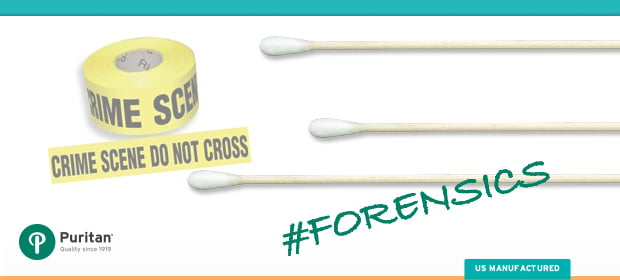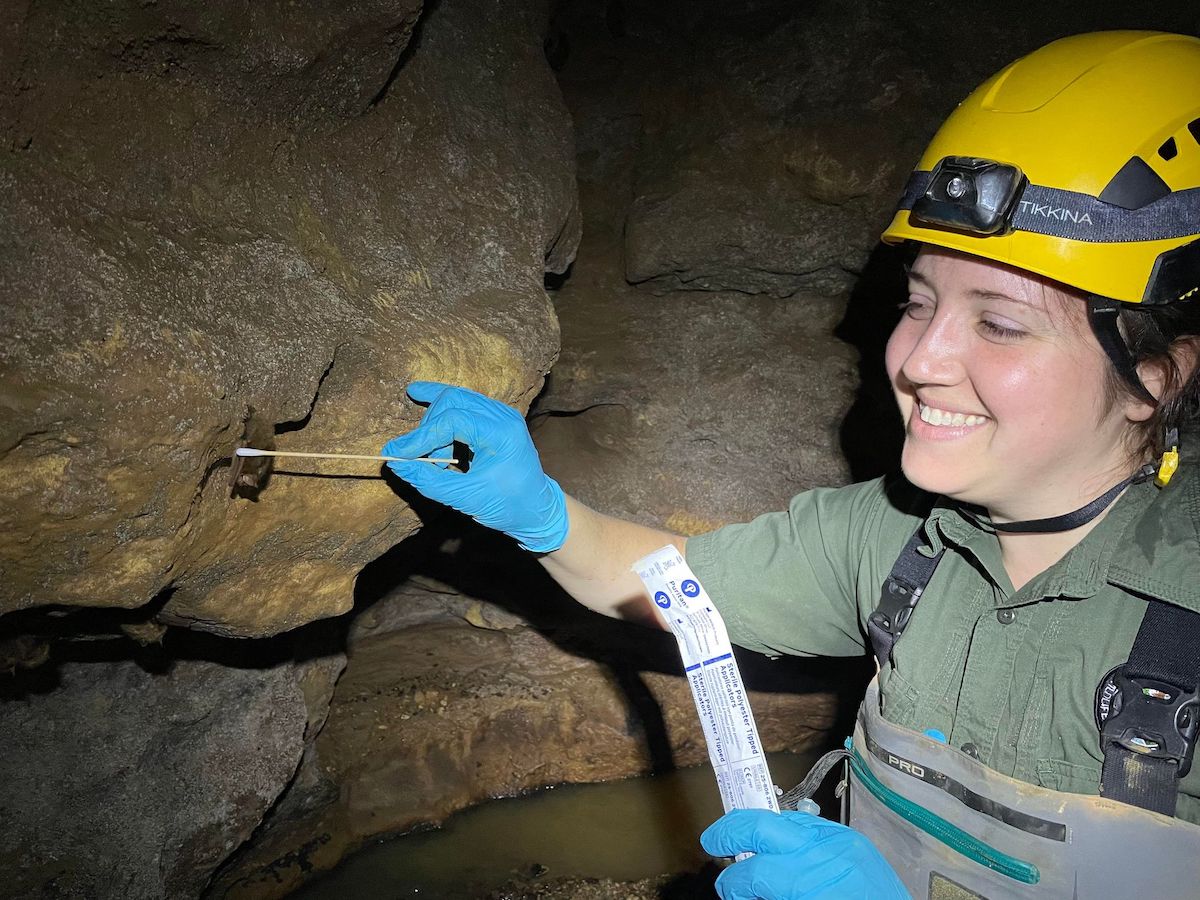Background Information
Puritan’s commitment to top-notch product quality and reliability relies heavily on the feedback we receive from our product’s users. We work hand in hand with our customers to develop solutions and improve products for a flawless user experience. In November of last last year, the Wisconsin Department of Justice Crime Laboratory Bureau (WCLB) contacted Puritan regarding the performance of our sterilized, cotton-tipped applicators (Product#:25-806 1WC FDNA).
Because these swabs are produced under stringent controls to ensure no DNA, DNAse or RNAse contamination, they are popular for forensics applications requiring highly sensitive DNA extraction. The WCLB informed Puritan that they were having difficulties extracting DNA collected from crime scenes with two batches of our cotton-tipped applicators.
Puritan worked with the WCLB to systematically rule out other laboratory materials as the cause of the failed amplification. We also examined internal manufacturing parameters and customer feedback for all other lots to eliminate the possibility of a common raw material flaw. We then deconstructed the lab’s DNA amplification process using a Promega IQ system. During a critical wash step in which the swab tip is cut, placed in a vial with magnetic beads and an aqueous solution, the DNA remained in the wash solution but would not cling to the beads, thereby inhibiting amplification. The WCLB also informed us that their sample is heated to 158˚F to facilitate DNA release.
Puritan deduced that either the cold adhesive or aqueous binding agent were reconstituting from the swab tip into the heated solution and preventing the binding of the DNA to the magnetic beads.
Sample Production and Testing
The first experiment was designed to systematically address whether the glue or binding agent used in our manufacturing process interfered with the DNA binding process. We produced samples under four different conditions of hot or cold adhesive and various binding agent volumes for the WCLB to test with a diluted blood solution. The largest amount of DNA extracted came only from the samples that either substituted proprietary hot adhesive for cold or reduced cold adhesive by 50%, regardless of variability in binding agent volume. Therefore, we hypothesized that the cold adhesive used in our manufacturing process was likely dissolving at 158˚F and reconstituting into the DNA solution.
To confirm the cold glue as the culprit, we ran a second experiment with the WCLB—a targeted DNA interference test using dilutions of the cold adhesive (which is a liquid at room temperature and does not solidify until applied) and our proprietary hot adhesive (which is solid at room temperature and does not liquefy until heated to at least 280˚F). The WCLB researchers “spiked” their blood samples with three dilutions of the cold or cold adhesive, and then measured the effects on extraction efficiency. The results were stark. DNA extraction was unaffected by the presence of any concentration of the proprietary hot adhesive. By contrast, the amount of DNA from the blood samples spiked with the cold adhesive fell in direct inverse proportion to how much adhesive was present.
Root Cause and Corrective Actions
Our experiments unequivocally demonstrated that the cold adhesive previously utilized by Puritan in the manufacture of our swabs was the root cause of the DNA binding interference. Although this problem arose in only two batches of product, we revised the manufacturing process for all of our DNA-free certified products, substituting the cold adhesive with a proprietary hot adhesive. This simple alteration should eliminate any future variability in swab performance regardless of how the tip sample is excised.
Acknowledgement
Working in concert with the Wisconsin Department of Justice Crime Laboratory Bureau staff and our on-site manufacturing technicians, Puritan was quickly able to deduce the source of a rare product glitch, test it in context with the customer’s standard operating procedures and implement changes to ensure that future batches would never incur similar difficulties.
The case study outlined above exemplifies Puritan’s ongoing approach to consistency in product excellence. We constantly strive to improve products, evolve our manufacturing process and immediately address any issues raised by customers, no matter how detailed. By doing so, we ensure that our customers can have confidence in the high standards we set for our products. Every batch, every shipment, every experiment.





